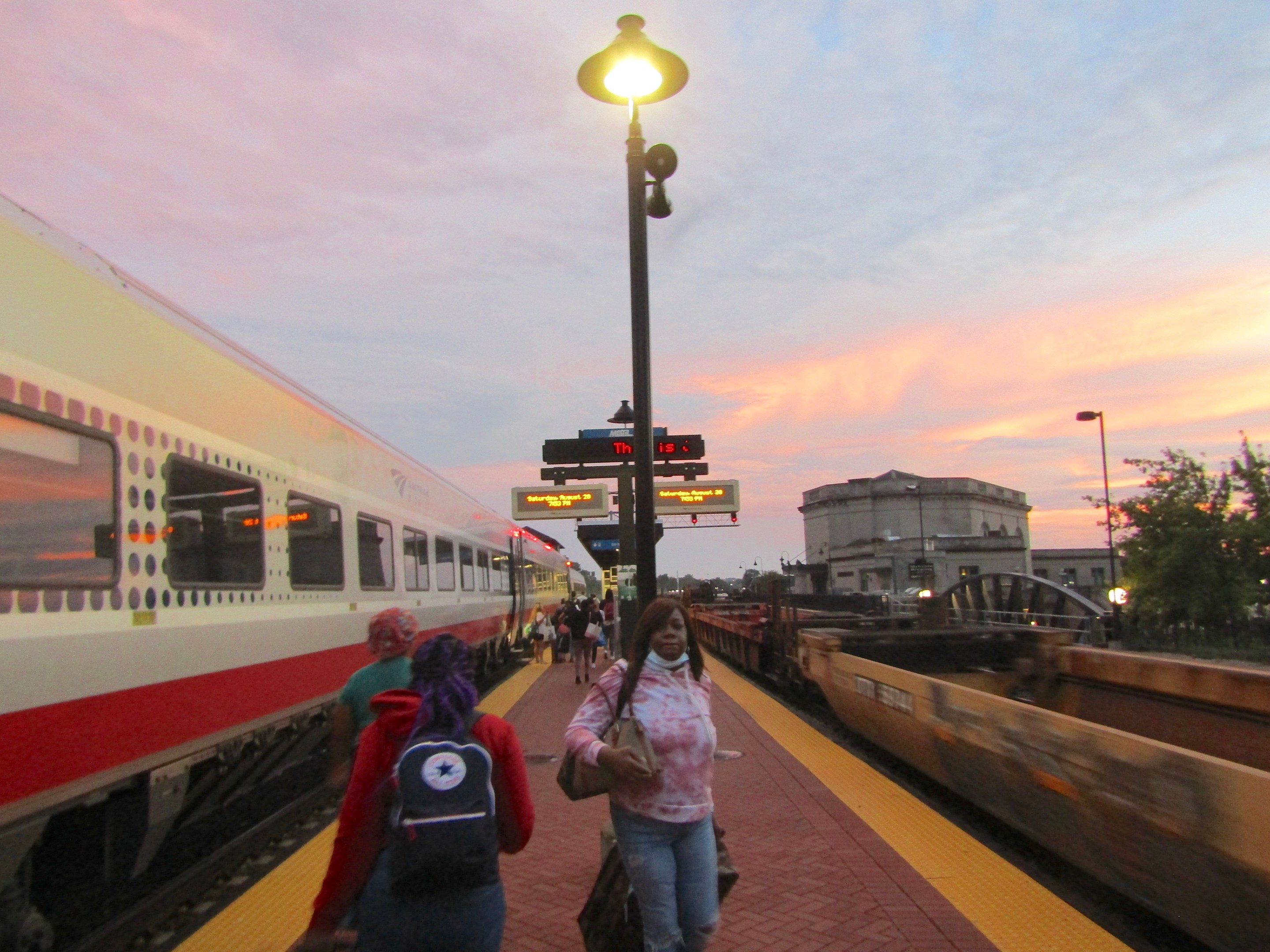On August 12, Governor JB Pritzker announced the Illinois Department of Transportation's new multiyear plan, a blueprint for spending $34.6 billion on transportation infrastructure over the next six years. Around $24.6 billion of that is going toward highway projects, $6.5 billion is allocated for transit, $2.5 billion will go to passenger and freight rail, $817 million is allocated for airports and other aviation infrastructure, and $150 million is going toward ports.
Unfortunately this continues the historic pattern of the state investing more much more capital funding in driving projects than transit infrastructure. And, frustratingly, $2.03 billion the highway money is earmarked for so-called "strategic expansion" – widening expressways and Interstates, plus "new interchanges and strategical regional arteries,” That will only encourage more driving, which is totally counterproductive to Governor Pritzker's stated goal of fighting climate change.
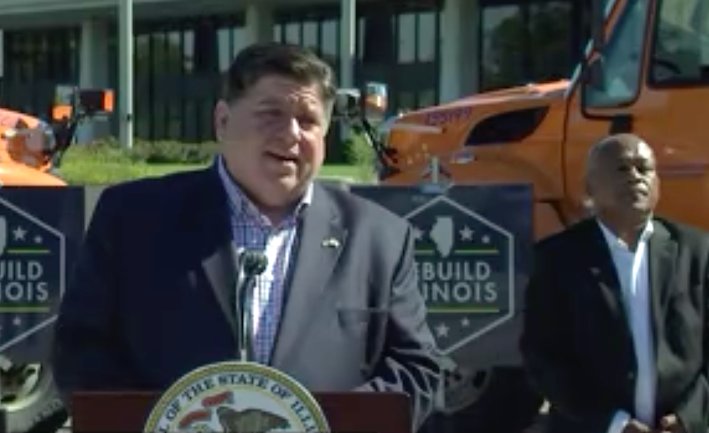
The expansion money includes $37 million for Interstates, $87 million for non-Interstate highways, $13 million for “non-Interstate highways marked,” $4 million for “non-interstate highways unmarked,” and $389,275 million for new bridges.
Still there are quite a few goodies in the plan for Chicagoland public transportation, state-operated Amtrak services, and downstate transit systems. Even the highway portion of the funding has some silver linings in the form of associated transit upgrades. Most notably, it includes money to modify highway corridors to allow for the expansion of popular Pace bus-on-shoulder service in the western and northwest suburbs.
The plan is bankrolled with the mix of state funding, federal resources, local money and, in case of railroad projects, private funds. Let's take a closer look at the sustainable transportation components.
Passenger and Freight Rail
As noted in the plan, Illinois “is at the center of the nation’s rail network and ranks second only to Texas with one of the most extensive and heavily used rail systems." Aside from Metra’s four “district” lines (Metra Electric District, Rock Island District, Milwaukee District West, and Milwaukee District North), the commuter railroad uses privately owned freight rail lines, so many of the freight improvements would benefit commuters as well. The rail improvements are all grouped under the FY2023-28 Multimodal Multi-Year Improvement Program, with $1.228 billion budgeted for passenger rail specifically.
$246 million will go toward the ongoing project to upgrade the Chicago-to-St. Louis Lincoln Service route to 110 miles per hour speeds. The progress on speeding up service has been incremental. As of December 2021, trains can travel up to 90 miles per hour on the Joliet to Alton segment, which accounts for most of the corridor outside Chicagoland. The plan mentioned that “speeds of up to 110 mph between St. Louis and Chicago should follow, pending advancements in technology required for faster trains.”
Asked to elaborate, IDOT spokesperson Guy Tridgell simply said the department “continue[s] to actively work” with Union Pacific, Amtrak, and other entities “on completing the steps needed to reach a final goal of 110 mph service on the Chicago-to-St. Louis corridor. We are hopeful to reach that goal in 2023.”
The plan also allocates funding for two new state-supported Amtrak corridors that faced numerous delays over the past decade. The new service to Moline, on the Illinois side of the Quad Cities region, would use the BNSF tracks already used by the state-supported Carl Sandburg/Illinois Zephyr service (which serve Galesburg and Quincy in Western Illinois), and the currently freight-only Iowa Interstate railroad tracks. The upgrades to BNSF portion have already been completed, and the plan allocates a total of $447 million to make the Iowa Interstate portion suitable for passenger trains.
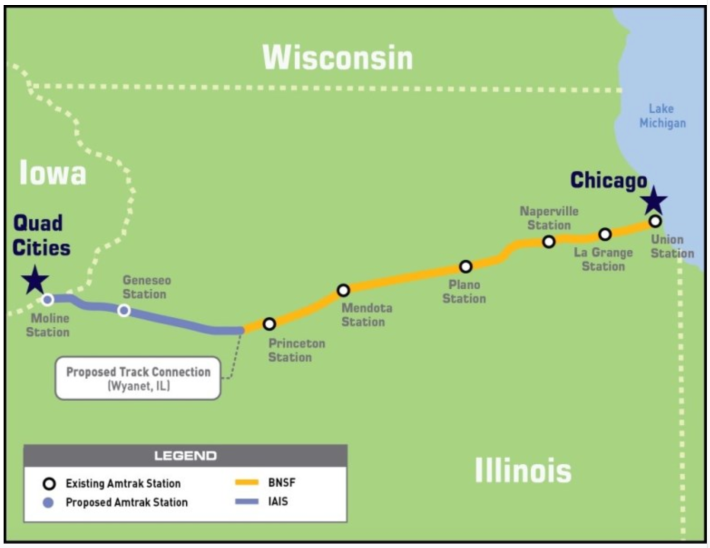
Amtrak and IDOT originally planned to restore Black Hawk Amtrak service, which used to connect Chicago to Rockford, Freeport, and Galena, northwest Illinois, plus Dubuque, Iowa. But issues with Canadian National, which owns the tracks they were hoping to use, led them to pursue an alternative route to Rockford, using Metra’s Milwaukee District West Line tracks and the Union Pacific tracks west of Elgin. Since there is no non-CN route to the destinations further west, that part of the plan is suspended indefinitely. Tridgell confirmed that, aside from funding a feasibility study, IDOT isn’t currently looking to take that route beyond Rockford.
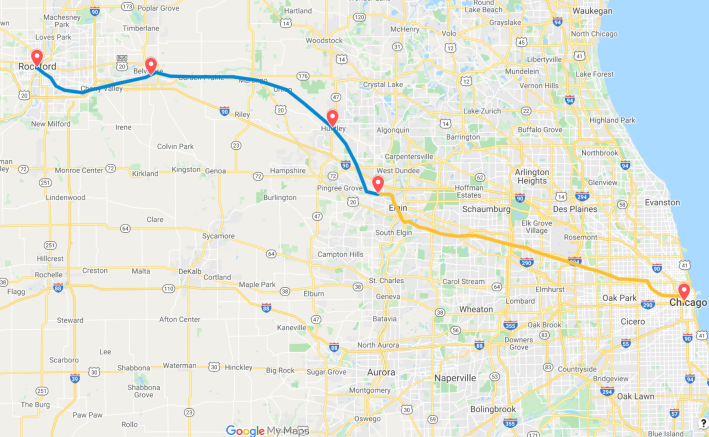
The IDOT plan allocates $275 million through the Rebuild Illinois state infrastructure funding program, passed in June 2019, to build the Metra MD-West and UP track connection, and make other improvements.
Tridgell said that it was too early to talk about when the construction will start, let alone when either service would be up and running. “We continue to work with the host railroads to reach agreements on the scope of improvements needed to bring passenger rail service to Moline and Rockford. Once those negotiations are completed, we will have a better sense of when service could begin on those two corridors.”
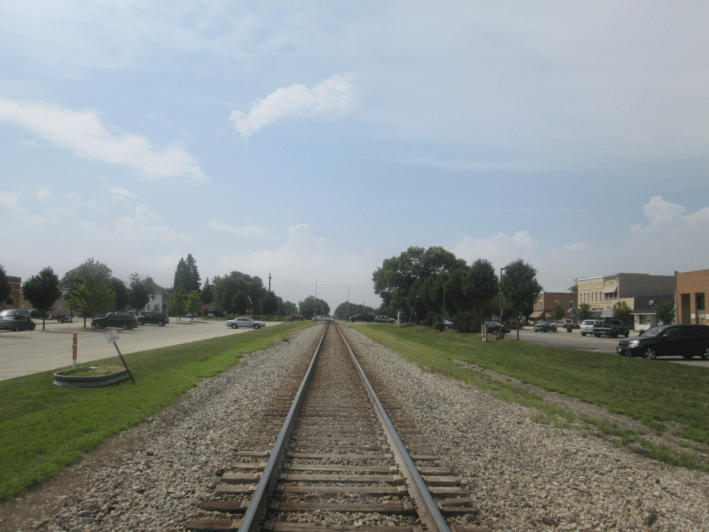
The IDOT plan also calls for spending $100 million in Rebuild Illinois funds to increase capacity on the largely single-track section of the CN line used by the Chicago-to-Carbondale Illini/Saluki route through “installation of universal crossovers, siding extensions, and double track construction near Champaign and other locations along the corridor.” Tridgell said that IDOT is working with CN and outside consultant to develop a more specific list of projects by early 2023.
Around $400 million will go to the CREATE program, an ongoing effort to relieve major area rail bottlenecks in the Chicago region. Most notably, the IDOT plan allocates a total of $180 million for the 75th Street Corridor Improvement project. That initiative includes grade-separating UP tracks from Norfolk Southern/Belt Railway tracks at 80th Street; adding a second track for the section of Metra's SouthWest Service line between Wrightwood station (near 79th Street and Kedzie Avenue) and Halsted Street; and building a brand-new connection between the SouthWest Service and Rock Island District lines.
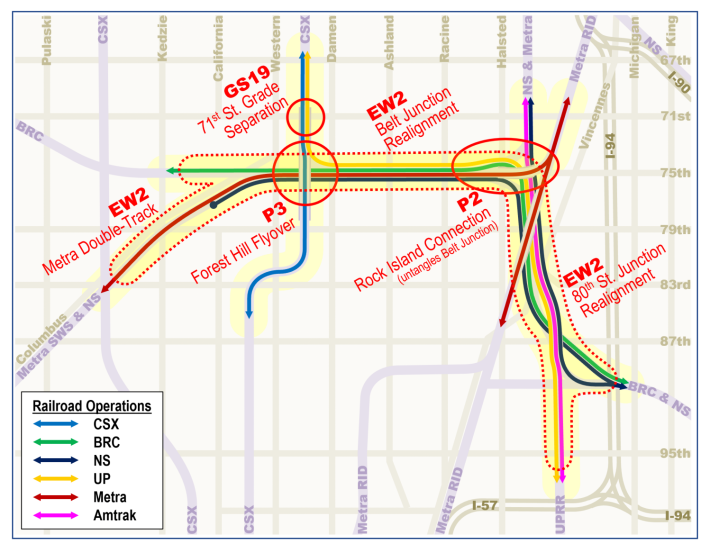
This will unsnarl one of the region’s busiest rail crossings, reducing delays for SouthWest Service trains and most Amtrak routes that travel east of Chicago, and move the Metra line’s downtown terminal from congested Union Station to underused LaSalle Station, which currently only serves RID trains.
Public transportation
The transit portion of the plan doesn’t give an exact breakdown of how much money will go to each project, but it does outline which initiatives will get Rebuild Illinois funding. In addition to a Metra project to convert three diesel locomotives to battery power, which was announced last week, IDOT is allocating money to rehab the downtown Van Buren street station, which serves Metra Electric and South Shore Line trains.
The CTA will get money to build two electrical substations on the Blue Line’s O’Hare branch to accommodate newer 7000 Series train sets, which have higher power requirements than the line’s current power supply can accommodate.
Pace is getting funding for building the stations for the planned Tri-State Tollway express bus services; expanding the existing park-n-ride for its I-55/Eisenhower Expressway commuter express services; and to construct a new garage in Plainfield to accommodate said services.
But perhaps the most notable transit improvement in the IDOT plan is actually included in the highway funding portion. Around $11.74 million is allocated to rebuild the shoulders of I-290 and IL 53 highways between Lake Cook Road in Palatine and Des Plaines Avenue in Forest Park, near the Forest Park Blue Line station.
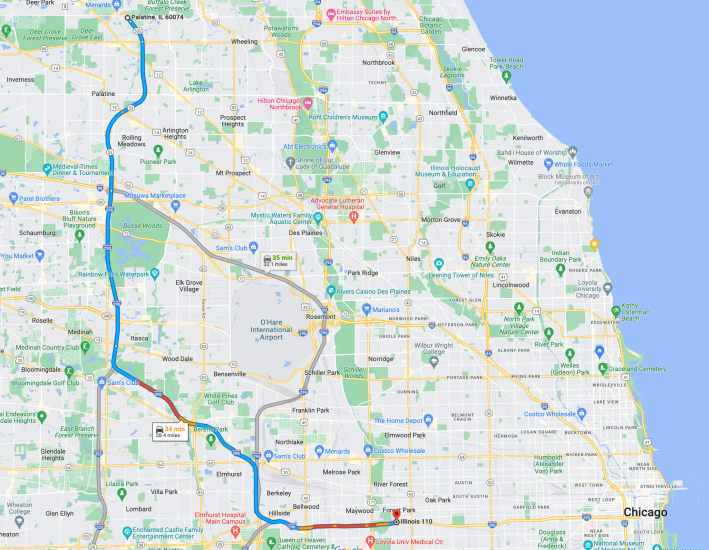
Tridgell said the planned upgrades will accommodate an I-55-style bus-on-shoulder service, with buses using the shoulder during rush hours and other busy traffic conditions.“The general scope of work consists of restriping, resurfacing, signage, and rumble strip modifications. The project will accommodate both existing Pace service and routes planned in the future.”
Pace Route 757, a commuter express service that ran between Oak Park, Forest Park and the northwest suburbs, used I-290 between Forest Park and Bensenville, but the route has been suspended since spring 2020. Route 604 currently uses IL 53 to travel between the Northwest Transportation Center and the Rand Road corridor in Palatine.
Pace spokesperson Maggie Daly Skogsbakken said nowadays Pace requests bus-on-shoulder or flex lanes (lanes that become bus-only in the event of traffic jams) whenever there is any kind of state highway rehab project. She said Pace is currently launching a market analysis study for bus-on-shoulder service between the Forest Park 'L' station and Mannheim Road.
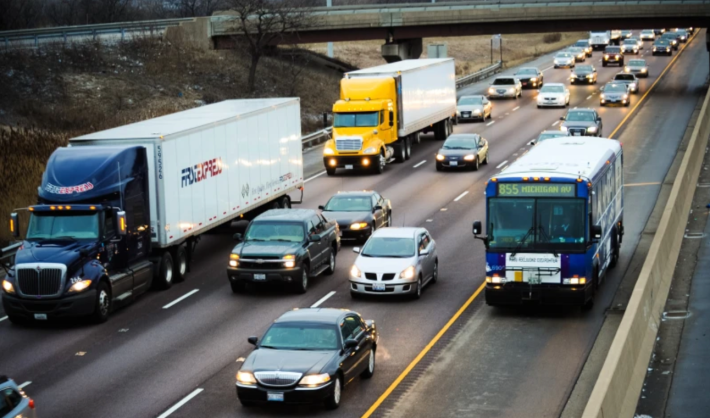
Downstate, much of the transit funding in the IDOT plan is going toward facility improvements and fleet replacement. One interesting trend running through those projects is that much of the money is going toward hybrid and electric vehicles, as well as renewable energy for bus facilities. Bloomington-Normal Public Transit system is getting $8 million for electric buses. Champaign-Urbana Mass Transit District is allocated $2.11 million to expand its. solar panel array. And the city of Decatur is getting $1 million to build a new bus station that will include “state-of-the-art electrical infrastructure for charging hybrid and electric vehicles.”
Tridgell said the focus on electrification was by design. “Our transit division has encouraged our transit partners at the local level to integrate alternative fueled-vehicles into their fleets. The fact that many transit projects in the multiyear program feature electric charging and solar power is deliberate and something we want to see continue.”
